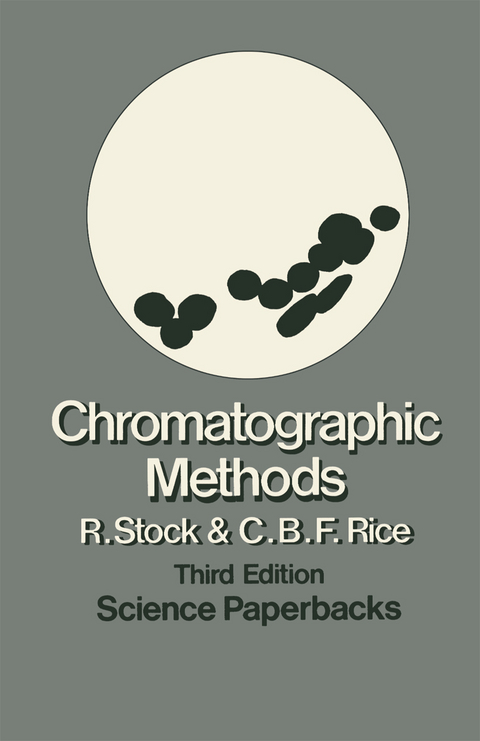
Chromatographic Methods
Seiten
1974
Chapman and Hall (Verlag)
978-0-412-20810-2 (ISBN)
Chapman and Hall (Verlag)
978-0-412-20810-2 (ISBN)
Like fractional distillation, chromatography relies on the relative movement of two phases, but in chromatography one is fixed and is known as the stationary phase; Chromatographic methods may be classified first according to the nature of the mobile phase and, second, according to the nature of the stationary phase.
Classification of chromatographic methods Chromatography is the name given to a particular family of separation techniques of great effectiveness. The original method was described in 1903 by Tswett, who used it for the separation of coloured substances, and the name chromatog raphy stems from this. However, the limitation to coloured compounds never really obtained, and most chromatographic separations are nowadays performed on mixtures of colourless substances, including gases. Like fractional distillation, chromatography relies on the relative movement of two phases, but in chromatography one is fixed and is known as the stationary phase; the other is known as the mobile phase. Chromatographic methods may be classified first according to the nature of the mobile phase and, second, according to the nature of the stationary phase. The mobile phase may be a liquid or a gas, and the stationary phase may be a solid or a liquid. There are thus four main sub-divisions of the chromatographic process, as set out in Table 1.1. The system is called adsorption chromatography if the stationary phase is a solid, and partition chromatography if it is a liquid.
Classification of chromatographic methods Chromatography is the name given to a particular family of separation techniques of great effectiveness. The original method was described in 1903 by Tswett, who used it for the separation of coloured substances, and the name chromatog raphy stems from this. However, the limitation to coloured compounds never really obtained, and most chromatographic separations are nowadays performed on mixtures of colourless substances, including gases. Like fractional distillation, chromatography relies on the relative movement of two phases, but in chromatography one is fixed and is known as the stationary phase; the other is known as the mobile phase. Chromatographic methods may be classified first according to the nature of the mobile phase and, second, according to the nature of the stationary phase. The mobile phase may be a liquid or a gas, and the stationary phase may be a solid or a liquid. There are thus four main sub-divisions of the chromatographic process, as set out in Table 1.1. The system is called adsorption chromatography if the stationary phase is a solid, and partition chromatography if it is a liquid.
1 Introduction.- 2 Liquid-phase Chromatography on Columns.- 3 Paper Chromatography; Zone Electrophoresis.- 4 Gas Chromatography.- 5 Thin-layer Chromatography.- 6 Model Experiments in Chromatographic Techniques.
| Zusatzinfo | VIII, 383 p. |
|---|---|
| Verlagsort | London |
| Sprache | englisch |
| Maße | 140 x 216 mm |
| Themenwelt | Naturwissenschaften ► Chemie ► Analytische Chemie |
| ISBN-10 | 0-412-20810-5 / 0412208105 |
| ISBN-13 | 978-0-412-20810-2 / 9780412208102 |
| Zustand | Neuware |
| Haben Sie eine Frage zum Produkt? |
Mehr entdecken
aus dem Bereich
aus dem Bereich


